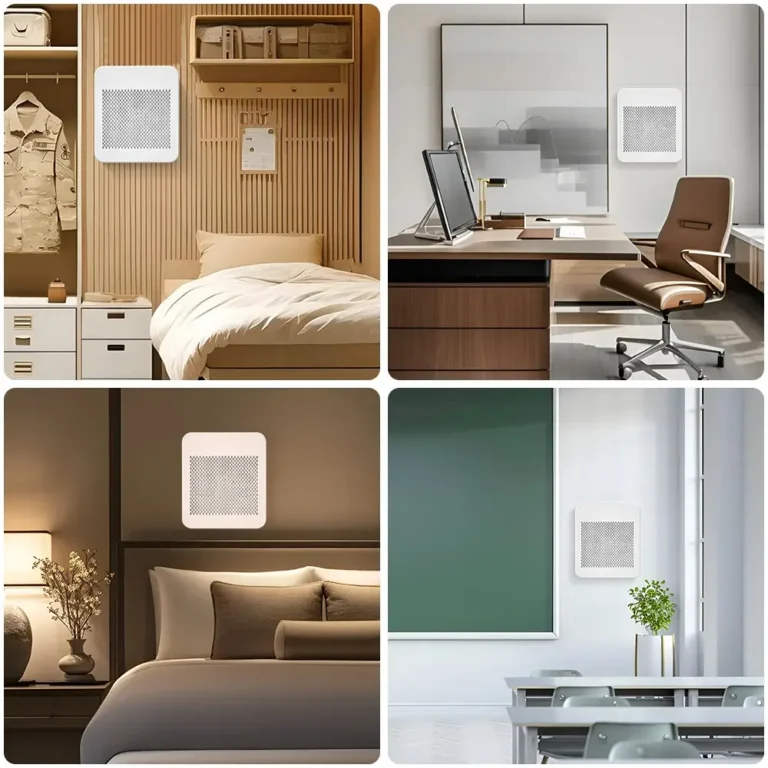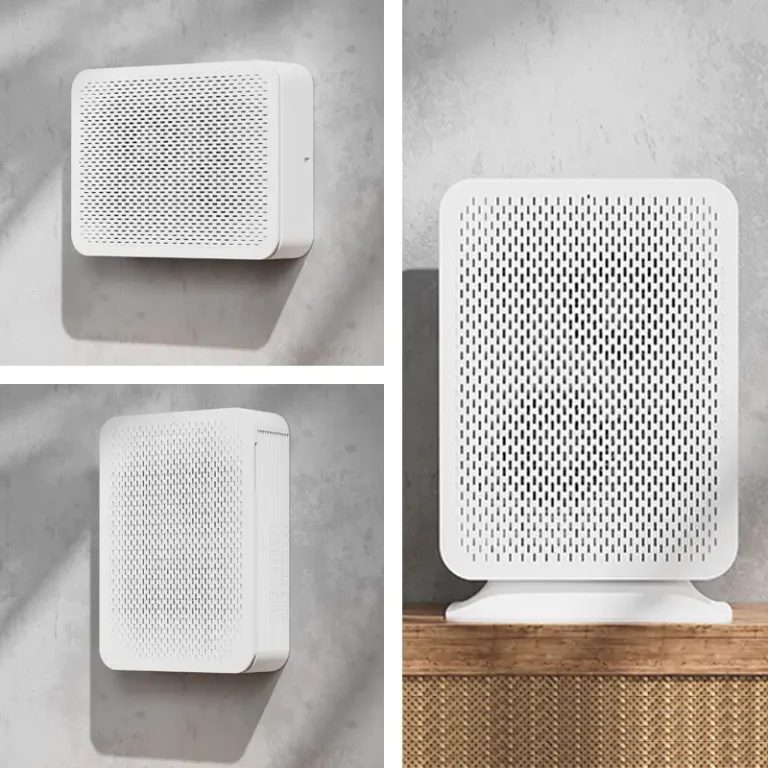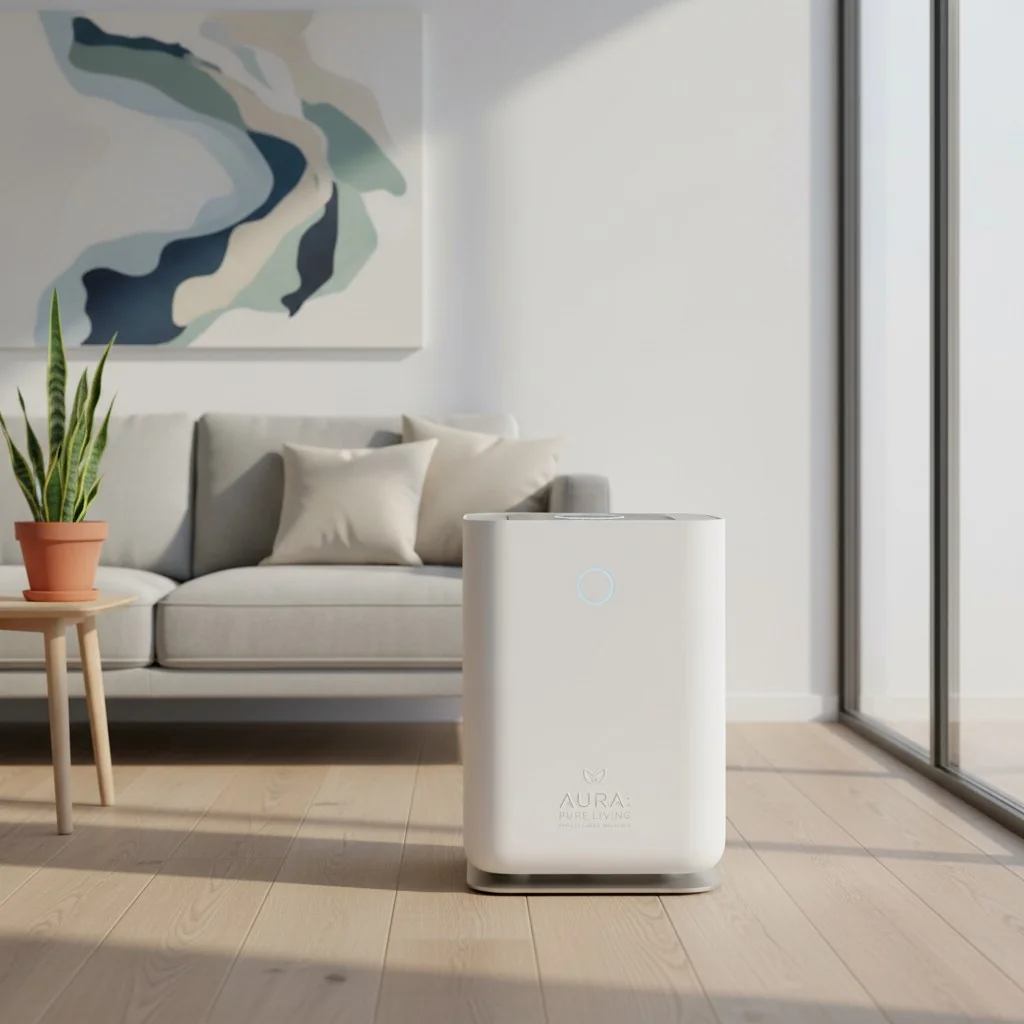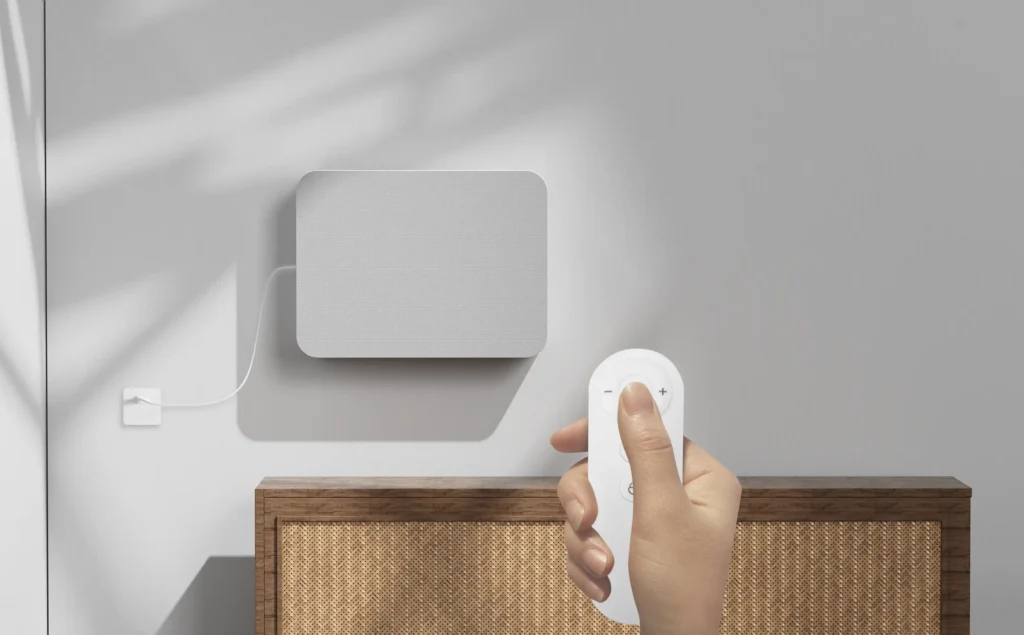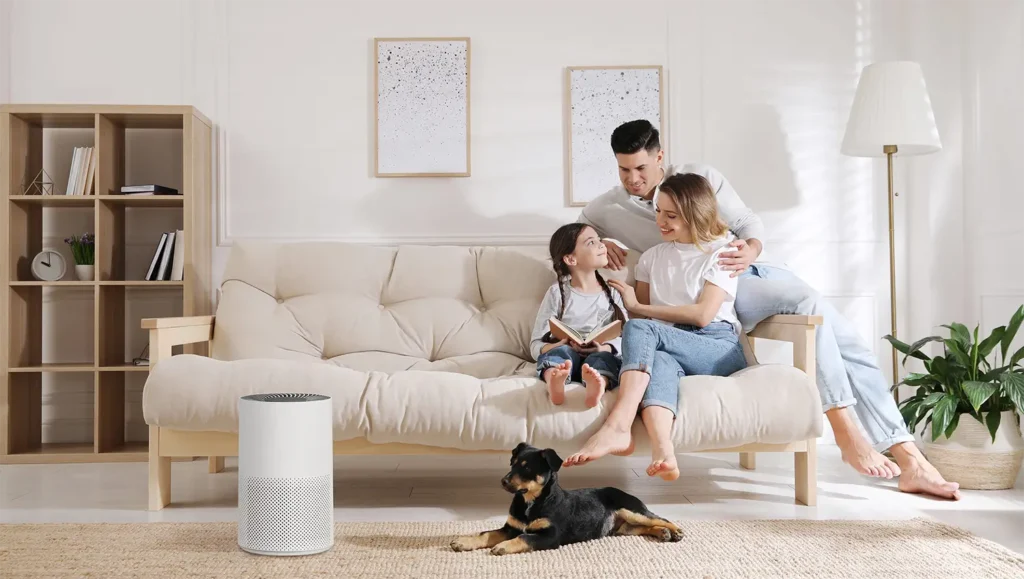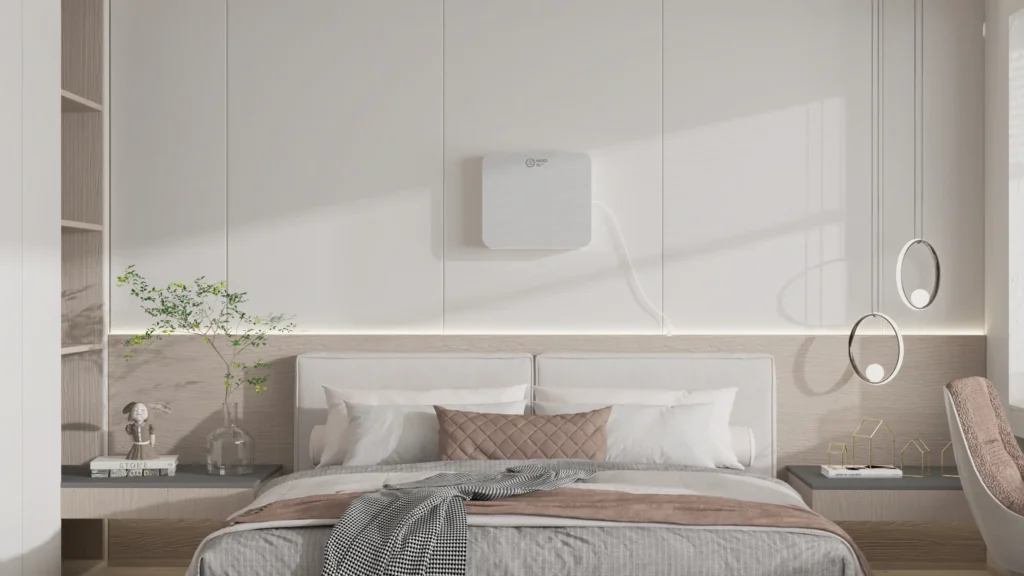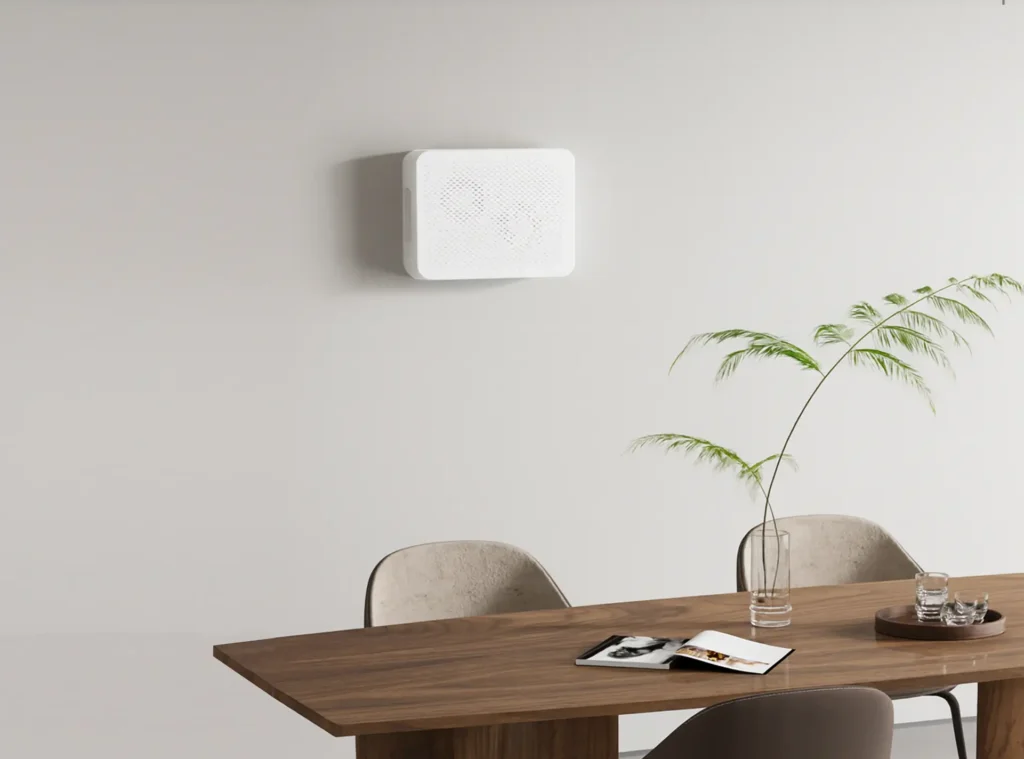Did you know that the air inside your office can be two to five times more polluted than the air outside? This startling fact often goes unnoticed, yet its implications for employee health, productivity, and overall well-being are profound. We spend a significant portion of our lives indoors, especially in office environments, where a cocktail of invisible airborne contaminants can silently undermine our health and efficiency. This phenomenon, often dubbed "Sick Building Syndrome," manifests in various ways, from increased sick days and chronic fatigue to a noticeable drop in concentration and productivity among employees.
Poor indoor air quality isn't just an inconvenience; it's a tangible threat that can lead to respiratory issues, allergies, headaches, and a general feeling of malaise. For businesses, this translates into tangible costs: reduced output, higher absenteeism, and a less engaged workforce. The good news is that this pervasive problem has a powerful and accessible solution: air purifiers. But with a myriad of options available, how do you choose the right one for your office? This blog post aims to provide a clear, easy-to-understand guide for selecting the best air purifier to transform your workspace into a healthier, more vibrant, and more productive environment. We'll demystify the technical jargon, highlight key features, and offer top recommendations to help you make an informed decision that benefits everyone in your office.
What’s Really in Your Office Air? (The Three Invisible Threats)
Before diving into solutions, it’s crucial to understand the problem. What exactly are these invisible threats lurking in your office air? They can be broadly categorized into three main types:
1. Microscopic Particles (PM2.5 and Beyond)
These are tiny solid or liquid particles suspended in the air, often too small to see with the naked eye. While you might think of dust as the primary culprit, particulate matter in an office environment can include much more: pollen, pet dander carried in on clothing, dust mites, mold spores, and even microscopic fragments from office equipment like printers and copiers. Outdoors, sources like vehicle exhaust and industrial emissions contribute significantly. These particles, especially those smaller than 2.5 micrometers (PM2.5), are particularly concerning because they can penetrate deep into the lungs, exacerbating respiratory conditions, triggering allergies, and even contributing to cardiovascular issues. They can also settle on surfaces, leading to a dusty environment that requires constant cleaning.
2. Chemical Gases (Volatile Organic Compounds - VOCs)
Imagine the "new car smell" or the scent of fresh paint – those are VOCs at work. In an office, these volatile organic compounds are emitted from a surprisingly wide array of everyday items. Common sources include new furniture, carpets, and building materials (off-gassing formaldehyde and other chemicals), cleaning supplies (ammonia, bleach, and various solvents), paints, adhesives, printers, and even personal care products used by employees. While some VOCs are merely unpleasant, many are known irritants or carcinogens, contributing to symptoms like headaches, nausea, dizziness, and respiratory irritation. Prolonged exposure can have more serious health consequences.
3. Biological Contaminants (Viruses, Bacteria, and Mold Spores)
The office environment can be a breeding ground for various biological agents. Viruses and bacteria, spread through sneezes, coughs, and even normal breathing, can circulate in the air, contributing to the rapid spread of illnesses like the common cold, flu, and other infectious diseases. Mold spores, often originating from damp areas or introduced from outside, can trigger allergic reactions, asthma attacks, and other respiratory problems. These biological contaminants thrive in poorly ventilated spaces and can significantly impact employee health and lead to widespread absenteeism.
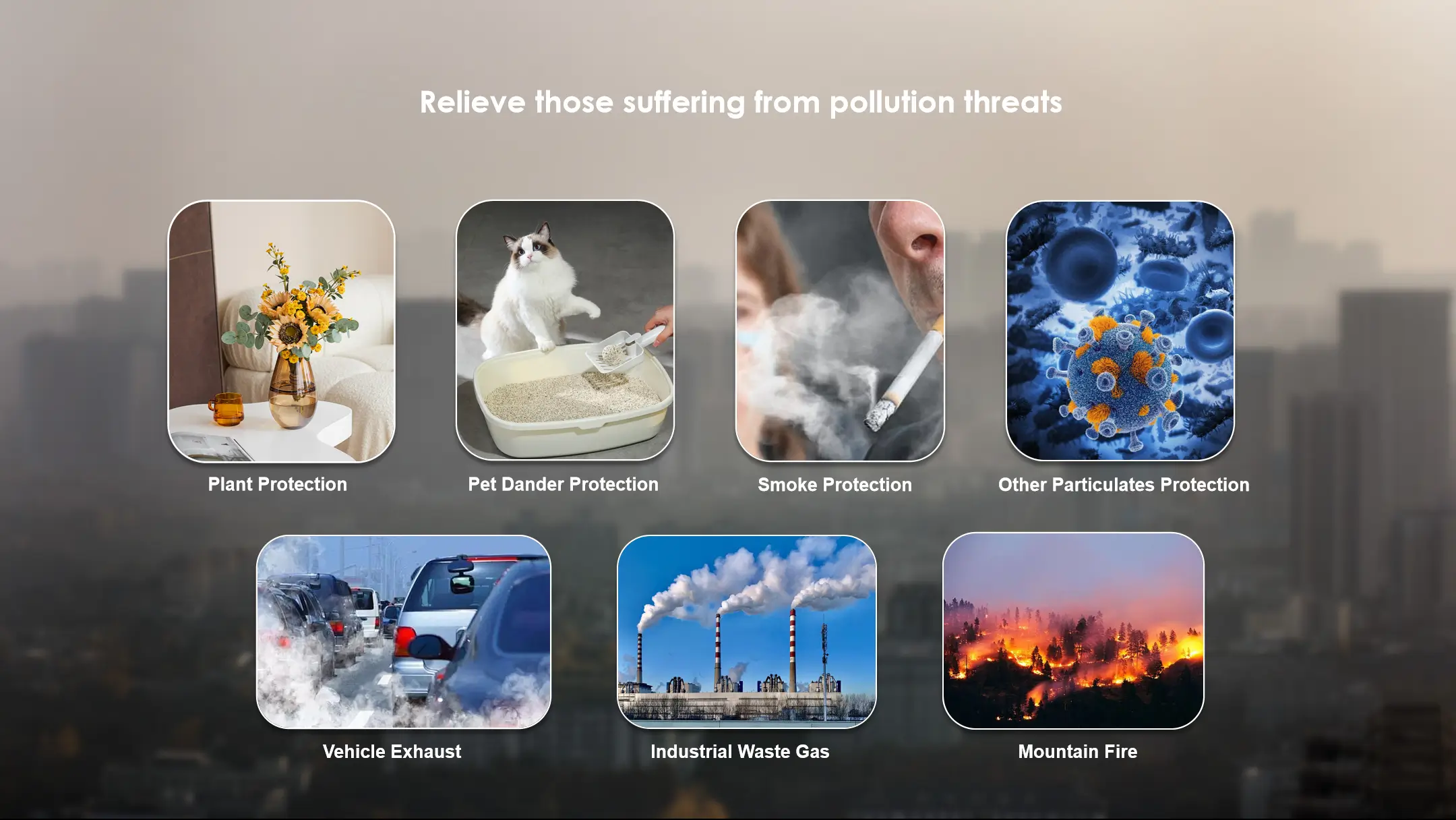
Decoding the Jargon: What to Look For in an Air Purifier
Navigating the world of air purifiers can feel overwhelming with all the technical terms and specifications. However, understanding a few key concepts will empower you to make an informed decision. Here’s what truly matters:
Filtration System: The Dynamic Duo
The heart of any effective air purifier lies in its filtration system. For comprehensive air cleaning, you need a combination of two primary filter types:
1. True HEPA Filter: The Particle Powerhouse
When it comes to capturing microscopic particles, the 真のHEPAフィルター is the undisputed gold standard. HEPA stands for High-Efficiency Particulate Air. By definition, a true HEPA filter must capture a minimum of 99.97% of airborne particles as small as 0.3 microns. This includes dust, pollen, pet dander, mold spores, and even many bacteria and viruses. It’s crucial to look for "True HEPA" certification, as some manufacturers use terms like "HEPA-type" or "HEPA-like," which do not meet the same rigorous standards and offer significantly lower filtration efficiency. A common misconception is that 0.3 microns is the smallest particle a HEPA filter can capture; in fact, due to the physics of particle capture (diffusion), HEPA filters are often even more efficient at trapping ultrafine particles smaller than 0.3 microns. The 0.3-micron size represents the Most Penetrating Particle Size (MPPS), which is the most challenging particle size for the filter to capture, thus representing its minimum efficiency point.
2. Activated Carbon Filter: The Odor and Chemical Eliminator
While HEPA filters excel at trapping particles, they are largely ineffective against gaseous pollutants and odors. This is where the 活性炭フィルター comes in. Activated carbon is a highly porous material that adsorbs (attracts and holds) gas molecules, effectively removing VOCs, chemical fumes, cooking odors, smoke, and other unpleasant smells from the air. The more activated carbon a filter contains, the more effective and longer-lasting it will be at tackling these gaseous contaminants. For offices, especially those with new furniture, ongoing renovations, or a high volume of foot traffic, a robust activated carbon filter is indispensable for maintaining fresh and clean air.
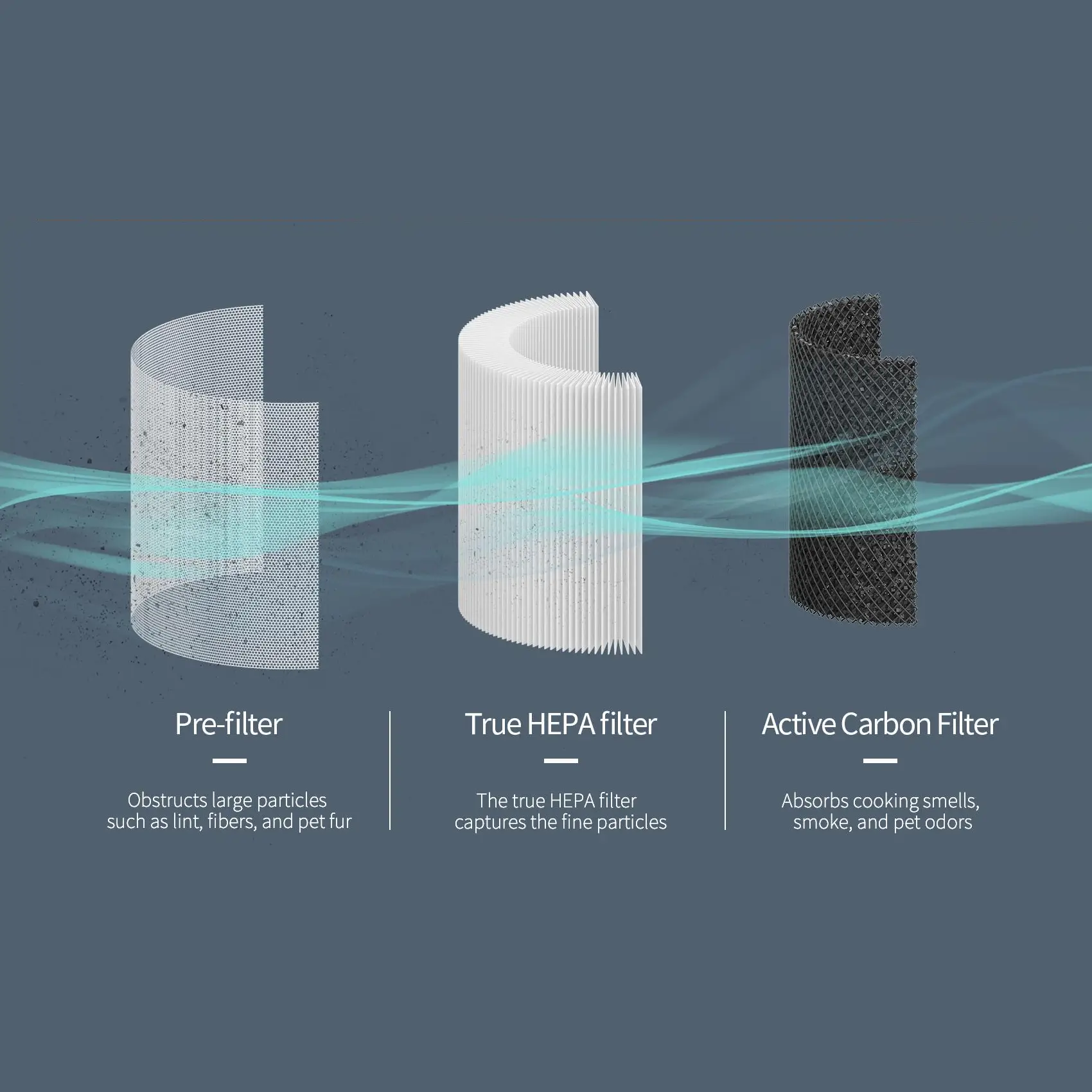
Key Performance Numbers: Understanding What Matters
Beyond the filter types, two numbers are critical for evaluating an air purifier’s performance:
1. CADR (Clean Air Delivery Rate): The Purifier’s "Power Level"
CADR stands for Clean Air Delivery Rate, and it’s a standardized metric that indicates how quickly an air purifier can remove pollutants from a room. It measures the volume of filtered air delivered by an air purifier, typically in cubic feet per minute (CFM) or cubic meters per hour (m³/h), for three common pollutants: smoke, pollen, and dust. A higher CADR means the purifier can clean a larger room or clean a room more quickly. A simple rule of thumb, often referred to as the "2/3 Rule," suggests that the CADR should be at least two-thirds of the room’s square footage. For example, a 300 sq ft office would ideally need an air purifier with a CADR of at least 200 CFM. It’s important to match the CADR to the size of the space you intend to purify to ensure effective air changes per hour (ACH).
2. Noise Level (dBA): The Silent Operator
An air purifier might have excellent filtration and a high CADR, but if it sounds like a jet engine, it’s unlikely to be used consistently in an office environment. Noise level, measured in decibels (dBA), is a crucial consideration for productivity and comfort. A powerful-but-loud purifier is useless if employees turn it off to escape the distraction. Look for models that operate quietly, especially on lower fan settings. Many modern air purifiers, like the HisoAir Wall-Mounted Air Purifiers, incorporate advanced noise reduction technologies such as Decibel Cancellation™ technology, allowing them to deliver maximum filtration with minimal noise, operating as low as 25 dB(A) for quiet comfort. This is particularly important for open-plan offices or quiet workspaces where constant background noise can be a significant deterrent to concentration. The sleek, ultra-slim design of wall-mounted units also ensures they take up zero floor space, seamlessly integrating into any office aesthetic while providing powerful and quiet air purification.

Our Top Picks: The Best Air Purifiers for Any Office Situation
Choosing the right air purifier depends on your specific office needs, size, and budget. Here are some top recommendations that excel in different scenarios, along with a special mention of innovative solutions like HisoAir's wall-mounted purifiers:
1. Best Overall Value: Coway Airmega AP-1512HH Mighty
- Why it wins: The Coway Airmega AP-1512HH Mighty has consistently been a top performer and a consumer favorite for years, and for good reason. It strikes a near-perfect balance of power, price, and proven performance. It features a True HEPA filter and an activated carbon filter, effectively tackling both particulate matter and VOCs. Its compact size makes it suitable for small to medium-sized offices or individual workstations, yet it boasts a CADR sufficient for rooms up to 361 sq ft. It also operates quietly, especially on lower settings, making it an unobtrusive addition to any workspace. This unit is a reliable workhorse that delivers excellent air quality without breaking the bank.
2. Best for Large, Open-Plan Offices: Alen BreatheSmart 75i
- Why it wins: Open-plan offices present a unique challenge for air purification due to their large, interconnected spaces. The Alen BreatheSmart 75i is designed to meet this challenge head-on. It's powerful enough to clean vast areas, covering up to 1,300 sq ft every 30 minutes, making it ideal for large communal workspaces. Despite its immense power, it's engineered to be exceptionally quiet, ensuring that its operation doesn't disrupt conversations or concentration. The 75i also features a True HEPA filter that can be customized with different layers (e.g., for pet dander, smoke, or chemicals), along with a robust activated carbon component. Its sleek design and intuitive controls, including an air quality sensor that automatically adjusts fan speed, make it a premium choice for demanding office environments.
3. Best for New Offices & Odor Control: Rabbit Air MinusA2 (with Toxin Absorber Filter)
- Why it wins: New offices, or those that have recently undergone renovations, often suffer from high levels of VOCs and persistent chemical odors from new paint, carpets, and furniture. The Rabbit Air MinusA2, particularly when equipped with its specialized Toxin Absorber Filter, is unmatched at removing these specific contaminants. This purifier utilizes a multi-stage filtration system, including a True HEPA filter and a substantial activated carbon filter, along with a customizable filter slot. The Toxin Absorber filter is specifically formulated to target VOCs and chemical odors, making it an excellent choice for mitigating "new building smell" or addressing specific odor issues. Its slim, wall-mountable design also offers flexibility in placement, allowing it to blend seamlessly into the office decor.
4. Best for Smart Features & Easy Management: Levoit Core 400S
- Why it wins: For facility managers overseeing multiple office spaces or those who appreciate modern convenience, the Levoit Core 400S offers excellent smart features and ease of management. This compact yet powerful purifier provides a True HEPA filter and an activated carbon filter, suitable for rooms up to 403 sq ft. Its standout feature is its user-friendly smartphone app, which allows for remote control, scheduling of run times, monitoring of air quality in real-time, and convenient tracking of filter life. This makes it incredibly easy to manage multiple units across different offices, ensuring optimal air quality with minimal manual intervention. The auto mode, which adjusts fan speed based on detected air quality, further enhances its set-it-and-forget-it appeal.
Innovative Solutions: HisoAir Wall-Mounted Air Purifiers
While the above are excellent freestanding options, for offices seeking a discreet, space-saving, and highly efficient solution, HisoAir Wall-Mounted Air Purifiers offer a compelling alternative. Engineered for optimal indoor environments, these purifiers provide high-efficiency purification with flexible installation and seamless integration. Their ultra-slim design, at just 144mm thin, offers a sleek and modern aesthetic while taking up zero floor space – a significant advantage in crowded office environments. Featuring Decibel Cancellation™ Technology, HisoAir purifiers deliver maximum filtration with minimum noise, operating as low as 25 dB(A) for quiet comfort, ensuring no disruption to work. They incorporate high-dust capacity HEPA filtration and antibacterial filter protection, inhibiting microbial growth and preventing secondary pollution. With models like the HA180/HA200 delivering 380m³/h CADR and the HA380/HA400 with dual-fan boosted performance for larger spaces, HisoAir provides powerful and efficient air purification that blends seamlessly into any office design. Their smart monitoring and control features, including real-time air quality sensors and app control, further enhance their appeal for modern workplaces. For businesses prioritizing both performance and aesthetics, HisoAir wall-mounted units represent a smart investment in employee well-being and productivity.
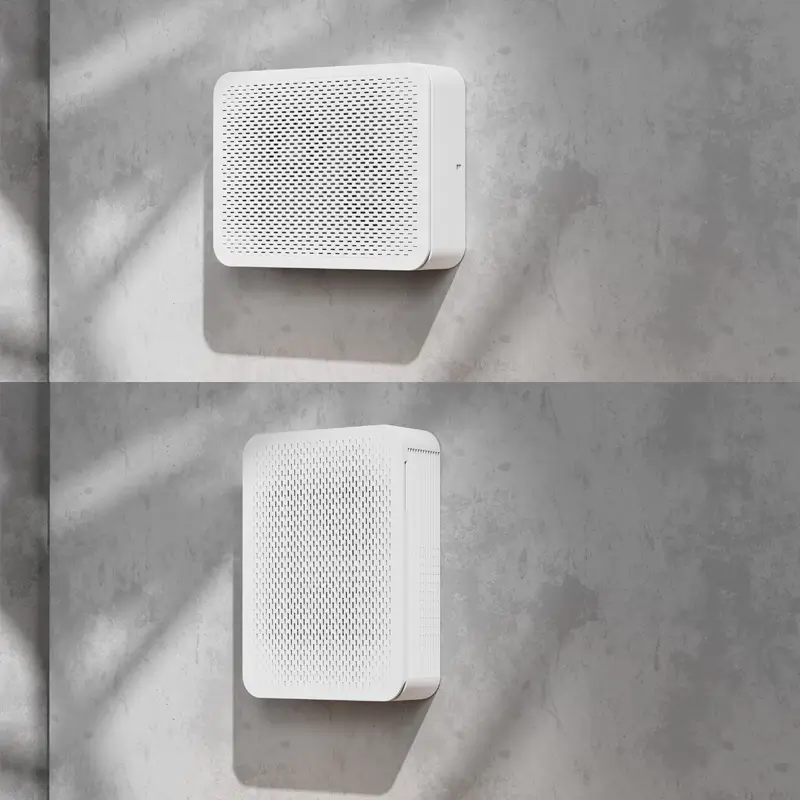
Don't Forget the Long-Term: Total Cost of Ownership
When investing in an air purifier for your office, it's easy to focus solely on the initial purchase price. However, a truly informed decision requires considering the Total Cost of Ownership (TCO). The upfront cost is just one piece of the puzzle; ongoing expenses can significantly add up over the lifespan of the unit. Neglecting these factors can lead to unexpected costs and diminish the perceived value of your investment.
The primary components of an air purifier's TCO are:
1. Filter Replacement Costs
Air purifiers rely on filters to capture pollutants, and these filters have a finite lifespan. HEPA filters, while highly efficient, eventually become saturated with trapped particles and need to be replaced, typically every 6 to 12 months depending on usage and air quality. Activated carbon filters, which adsorb gases and odors, also become saturated over time and lose their effectiveness. The cost of replacement filters can vary significantly between brands and models. Some purifiers use proprietary filters that are more expensive, while others use more common sizes that might be more affordable. It's crucial to research the cost and availability of replacement filters before purchasing a unit. A cheaper air purifier might seem like a good deal initially, but if its replacement filters are prohibitively expensive or need frequent changing, its long-term cost could quickly surpass that of a more expensive unit with more durable or affordable filters. For instance, HisoAir Wall-Mounted Air Purifiers are equipped with high-capacity HEPA filters rated for 12 months of use, ideal for long-term air purification in busy environments, which helps in managing replacement costs effectively.
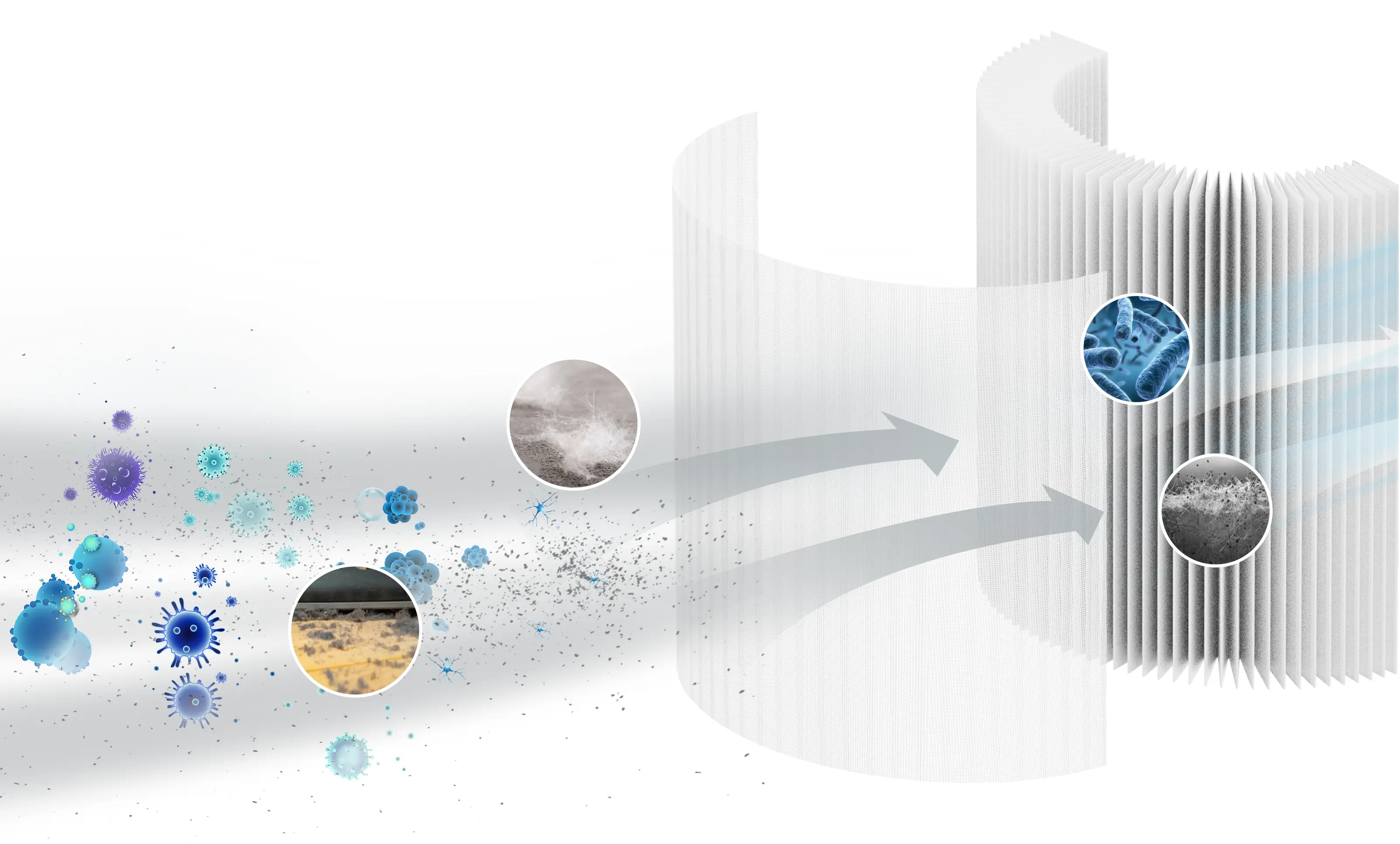
2. Energy Consumption
Air purifiers operate continuously, or for significant periods, to maintain clean air. This means they consume electricity, and their energy efficiency can impact your utility bills. Look for models that are Energy Star certified, as these are designed to be more energy-efficient. While the energy consumption of a single air purifier might seem negligible, when you're operating multiple units across an entire office, these costs can accumulate. Consider the CADR relative to the power consumption; a unit that cleans air efficiently with lower wattage will be more cost-effective in the long run. Advanced noise reduction and low differential pressure technology, as found in HisoAir products, not only ensure ultra-quiet operation but also contribute to stable, high-efficiency filtration with less energy consumption.
3. Maintenance and Longevity
Beyond filter replacements, consider the overall durability and maintenance requirements of the unit. Some purifiers may require occasional cleaning of pre-filters or external surfaces. A well-built unit from a reputable brand is more likely to last longer, reducing the need for premature replacement. Investing in a quality air purifier with a good warranty can save you money and hassle in the long run. Ultimately, a holistic view of the total cost of ownership ensures that your investment in clean office air is both effective and economically sound over time.
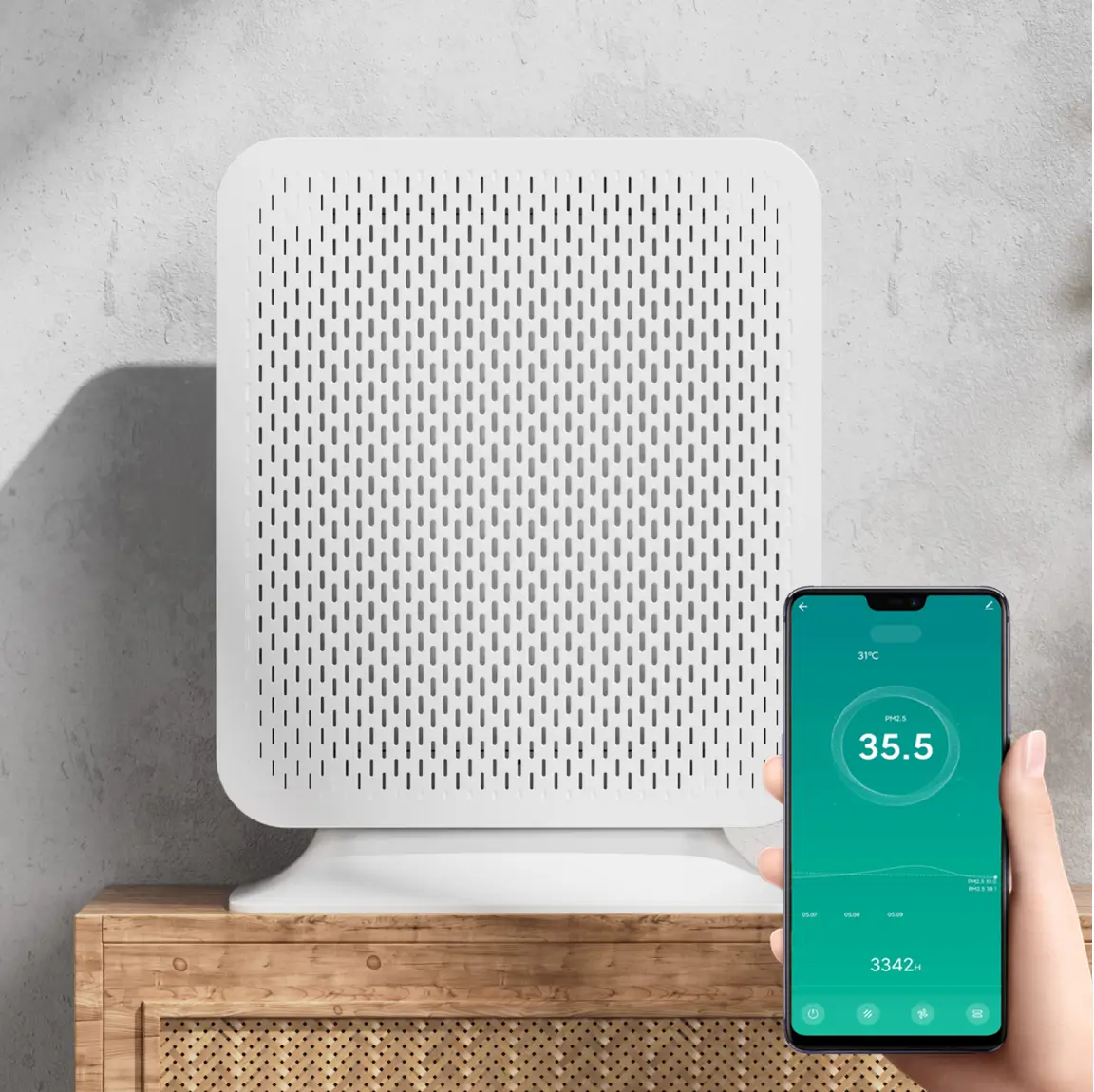
Conclusion: A Breath of Fresh Air is a Smart Investment
In today's dynamic work environment, the quality of the air we breathe is no longer a luxury but a fundamental component of a healthy and productive office. The invisible threats of particulate matter, chemical gases, and biological contaminants can silently undermine employee health, reduce productivity, and contribute to a less engaging workspace. Fortunately, the solution is readily available and highly effective: a well-chosen air purifier.
As we've explored, making an informed decision involves understanding a few key principles. Always prioritize air purifiers equipped with a 真のHEPAフィルター for capturing microscopic particles and an 活性炭フィルター for eliminating odors and harmful VOCs. Match the CADR to your room size to ensure efficient air changes, and always keep 騒音レベル in mind to avoid disruption in the workplace. Furthermore, consider the Total Cost of Ownership, factoring in filter replacement costs and energy consumption, to ensure your investment is sustainable in the long run.
Whether you opt for a versatile freestanding unit like the Coway Airmega Mighty, a powerful solution for large spaces like the Alen BreatheSmart 75i, an odor-control specialist like the Rabbit Air MinusA2, or a smart, manageable device like the Levoit Core 400S, the goal remains the same: to create a healthier indoor environment. And for those seeking a sleek, space-saving, and highly efficient solution that seamlessly integrates into any office design, HisoAir Wall-Mounted Air Purifiers stand out as an innovative choice, combining powerful purification with ultra-quiet operation and smart control.
Investing in clean air isn't just an expense; it's a direct and strategic investment in your team's health, well-being, and ultimately, your organization's performance. A breath of fresh air can lead to clearer minds, fewer sick days, and a more vibrant, productive workforce. Make the smart choice for your office today.

